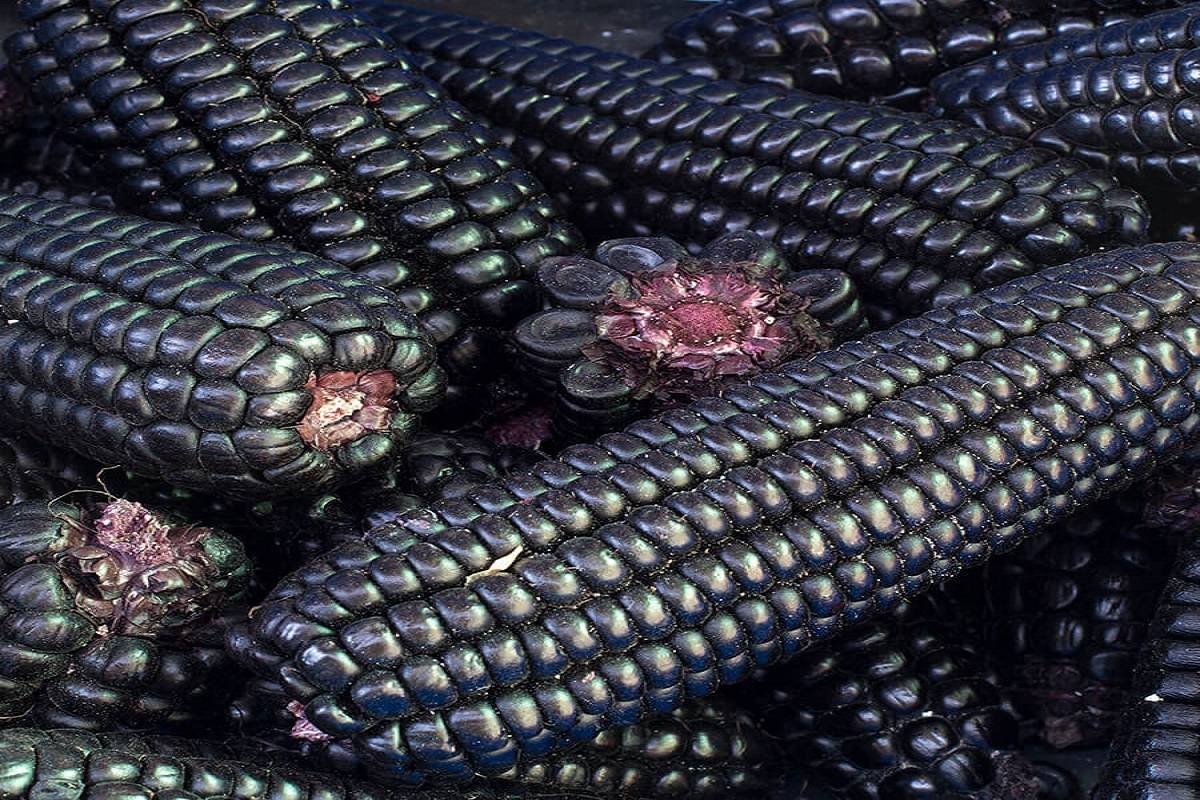
In Peru, purple corn is the subject of several popular folktales and legends. Peruvians claim that "Kculli" is the earliest type of ancient purple maize from which all other varieties have sprung. Kculli is also referred to as "The Plant of Remembrance." Purple maize has long been a staple ingredient in Peruvian cuisine.
According to some historians, the ancient Incan Civilization formerly considered purple corn to be a holy crop. They have traditionally been treasured for their usage as a natural food and beverage colorant as well as their part in the creation of the popular drinks "Chicha Morada" and "Mazamorra Morada," in addition to their intriguing stories. They were used to soak kernels in hot water to extract a rich purple hue for dishes and drinks.
Facts on Purple Corn
-
Purple corn, along with traditional yellow and white corn, is a member of the Zea mays plant family.
-
It is also referred to as maize Morado and is adored in the culinary world for its vivid purple color.
-
Fresh corn is utilized as well as milked or pureed for its natural purple coloring properties.
-
Numerous medical research investigating the effects of purple corn intake on diabetes, obesity, inflammation, and cellular health have focused on it in recent years.
-
It is swiftly emerging as a popular fresh, functional food as well as a concentrated supplement in the form of purple corn powders and liquid extracts due to studies that have so far produced outstanding results.
How come this corn is purplish?
The plant kingdom's darkest hue of grain is seen in purple corn grains. The anthocyanin pigments, which are abundant in purple maize grains, are what give them their purple colour. The anthocyanin concentration of the purple corn plant's husks is around ten times higher than that of its kernels. Although it is technically not black but purple, it is frequently referred to as "black maize". At first view, it appears to be black, yet they are deep purple.
According to some scientists, this maize had to struggle for existence in the hostile climate of the Peruvian Andes, which are 10,000–15,000m above sea level and consequently evolved a stronger immune system. As a result, a significant number of anthocyanins, the phytonutrient that gives the plant its deep purple colour, were finally produced. Some people think they can lose or change their purple colour if they are planted outside of Peru.
Composition
In terms of nutrients and content, purple corn is similar to yellow corn. On a dry basis (db.), it comprises 61% to 78% starch, 10% non-starch polysaccharides, 6% to 12% proteins, and 3% to 6% lipids. Purple maize stands out as a health-promoting food due to the anthocyanins and other phenolic compounds that set it apart from other ordinary types. Anthocyanins and phenolics, which are phenolic chemicals, are abundant in purple maize. The phenolic acids and flavonoids subclasses of phenolics are both found in purple corn. Overall, phenolic chemicals are more abundant in purple corn than in yellow corn.
Where Can you Find Purple Corn?
Purple or black corn is widely available in South American nations, while not as common as the white or yellow varieties. These corns can be prepared as hot 'corn on the cob' meals. These can be seen being transformed into several kinds of bagged chips, popcorn, or flour in America.
However, Indians don't have to go that far. To find this amazing corn, you only need to travel to the seven sisters. These colorful corns, which are widely grown in Mizoram, are very much liked by the inhabitants. It is used in everyday cooking as well as in a classic dessert called "Mim Ban”.

















